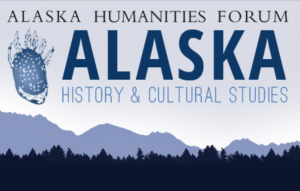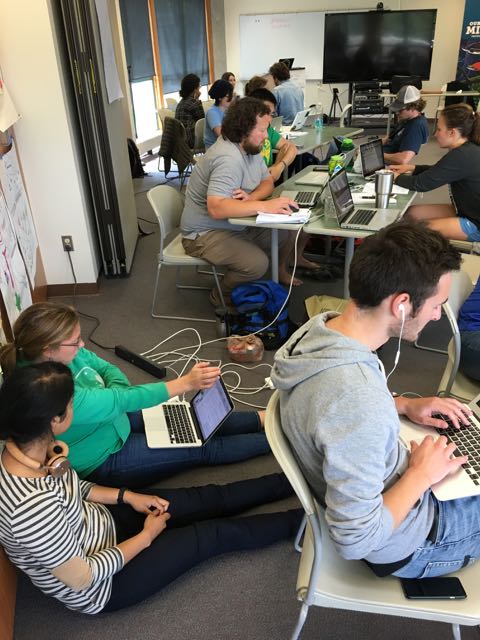Click here to see the iBooks we produced
Assignment Overview:
The combined final project for 600/680 will be to publish an iBook on Alaskan History and Culture organized around each of six geographic and cultural regions of the state. The iBook will be designed using iBooks Author (iBA) and can include a variety of text, images, videos, audios and interactive widgets.
Our iBooks Author Workflow guide
More on iBA media and widgets opportunities
Groups of 6 or 7 students will focus on one of the six regions. Click here for design groups.
Due date for the completed work is Weds June 29th. The focus on each regional section will be on the intersection of three factors natural environment, the human environment, and the cultural expressions unique to the indigenous people of each region. The emphasis should be on designing lessons which are culturally-responsive.
- Natural environment could include geography, climate, natural resources, flora, fauna. etc.
- Built environment (surroundings created by and for humans) could include technology, food, clothing, housing, transportation, etc.
- Cultural expressions could include art, music, religion, traditions, family etc
(Since all three are closely related, lessons can easily encompass more than one factor.)
Regional introductions (rough draft due 6/24):
Design groups should collaborate on a chapter introduction that provides readers with background on the natural environment, built environment (surroundings created by and for humans) and culture of the indigenous people of the region. The bottom line: your intro needs to introduce the reader to how the indigenous people of the region found a way to thrive in that area.
The introduction could include maps, timeline, artifact photographs (including historical), graphs, videos, audio files, or other items that build background for the reader.
Essential understandings should include:
- Identify and describe categories of characteristics that define a location as a place (e.g., weather characteristics, population density, flora / fauna, landforms).
- Identify and describe the characteristics of the region’s physical environment that attracted people – and both limited and enabled them to thrive and prosper (e.g., climate, water, soil, landforms).
- Describe the indigenous technologies that emerged in the region – clothing, housing, transportation, etc – and how they are a product of the natural environment. It could include examples of human modifications to the physical environment
- Identify and describe the interaction of the geography, technology and the culture(s) of the people(s) of the region.
- Describe historical highlights that are significant to understanding of the region and the interaction of indigenous and non-native peoples.
Lessons: Each student in the regional group will be responsible for developing a lesson which they could use in their 2016-17 teaching placement.
The format of lesson may vary but should include:
- Introduction of the lesson with brief historic context as needed.
- Essential question
- At least 5 related source documents (image, text, video, audio) that will assist the students in answering the essential question
- Clear statement of what students will be asked to do (objectives)
- Scaffolding question for documents (as needed) to assist the student in examining the documents
Because of the many multimedia and interactive widget available in iBA, lessons may vary from this format.
 Our online text is a great resource.
Our online text is a great resource.
Note: it divides Alaska into 5 regions.
